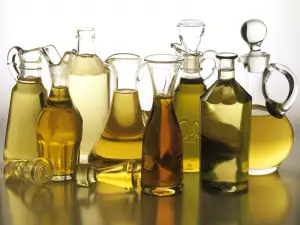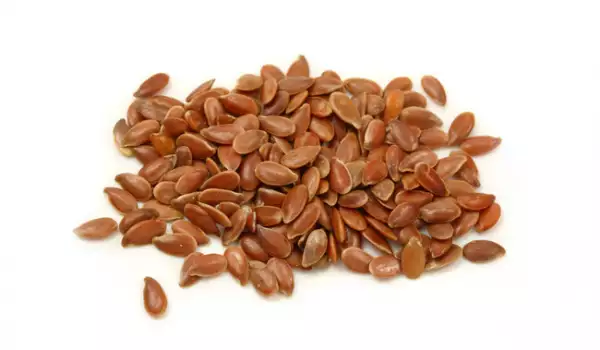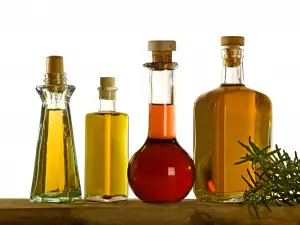Flax (Linum usitatissimum) has been known to mankind since time immemorial and is considered one of the earliest cultivated plants. Its benefits are evidenced by a vast number of studies that are adamant that flaxseed and their composition of the fiber, fatty acids and vitamins are truly an important part of a healthy diet.
Flax is from the Linaceae family, which are perennial herbaceous plants and subshrubs. This culture is grown mainly in three types - oleaginous, which produces flaxseed oil, fiber, from which fiber comes, and another, which combines both functions - for oil and fiber. The culture is a mass of flax and is grown for fiber and oil.
They are typical for Europe, the Mediterranean and Southwest Asia, and are spread throughout the entire area of the continent, excluding the northernmost extreme southern parts. Wild flax can be seen in meadows and grassy and rocky places with much humidity. It grows mostly from 200 up to about 2600 m altitude.
Fiber flax prefers moderate climate without sharp changes in day and night temperature. This culture loves moisture - both in soil and air. Because of its poorly developed root system, it requires rich soil with highly digestible nutrients.
Perhaps the most valuable part of the flax is its seed (Semen Lini). It must be brought to full maturity. Best suited for medicinal purposes is the larger flax seed. From flax and linseed comes flour (Farina Lini), which also is widely used. Infinitely valuable is the flaxseed oil (Oleum Lini), which is a popular dietary supplement.
It is important to note that only flaxseed oil obtained by the method of cold pressing, and stored properly is completely pure, if it is protected from oxygen oxidation of light and at a suitable temperature all valuable qualities and ingredients can be maintained.

Only that oil may contribute to human health. Otherwise improperly stored improperly obtained flaxseed oil can quite easily become rancid and toxic. Besides being a valuable health factor, it is used in paints, varnishes, linoleum, and soap.
Large crops of flax are grown today in India. Commercially you can buy flax as a food additive in the raw variety, packed in bags, to be able to add it in the composition of different dishes and foods.
History of flax
There is evidence that the first flax had been cultivated more than 7000 years ago in the Middle East. Even then people used it as a source of fiber and oil. Further in history the Egyptians, Jews, Greeks and Romans continued the cultivation of flax, the seeds were used for food, the oil applied as a medicine, and from the fibers clothing, ropes and sails for ships were made.
It is said that the military Roman legions used bread made from flax, which was a complete food, allowing them to withstand long trips and heavy battles. Even today, one of the ingredients of Roman bread remains flaxseed.
In ancient Babylon, parts of flax were used as a medicine, in 650 BC the great physician Hippocrates recommended it to relieve stomach pain and inflammation of the lining. Greek philosopher Theophrastus applied it to patients as a cure for coughs.
A little later, in the eighth century in France, Charlemagne even made a special law that commanded the use of flax seed among his subordinates, to be able to rely on their health. The law was accompanied by thorough rules for the use of flax.
Composition of flax
Flaxseed is the richest source of unsaturated Omega-3 fatty acids. These tiny seeds of flax regulate immune systems and improve many biochemical processes in the body. They also contain lignans, which are estrogens and antioxidants that regulate hormonal balance and stimulate the production of hormones in the body.
Flax seeds are rich in fiber, which are so important for digestion and excretion. Active secretion and increased motor function of the digestive system are helped by glycoside linamarin, flax causes a mild laxative effect, great for pain and colic.
The composition of flaxseed contains 5-12% mucilage, which ultimately causes a slight laxative effect. This mucilage can extract from epidermal cells by soaking in cold water without additional heating. The percentage of lean oil is 30-45%, which includes primarily glycerides of unsaturated fatty acids - linolenic, linoleic and oleic.
Flaxseed contains about 1.5% cyanogenic glycosides linamarin. Moreover, the small seeds of flax have 20-30% protein, 10-25% carbohydrates, organic acids, enzymes, vitamin A, etc..

In addition to omega-3, flaxseed and its oil are a source of Omega-6 (linoleic acid) and omega-9 (oleic acid) fatty acids, which in turn are a source of magnesium, zinc, B-group vitamins, vitamin E and vitamin A.
Benefits of Flax
Flax and its products are extremely valuable for human health and are used in the treatment and prevention of many diseases. It has antiseptic, anti-inflammatory, and soothing properties. It is an emollient, laxative, purgative agent with proven positive effect in calming a cough.
Flaxseed is widely used for spasmodic constipation. It’s mucus’ components have anti-inflammatory effects in inflammation of the stomach, intestines, bronchi, urinary and other sectors. It is also applied externally for burns, boils, etc.. To do this, make compresses with ground seeds or flaxseed oil. Flax oil is very effective on burns and is often mixed with warm water in such cases.
Flaxseed is good for patients with an impaired metabolism. Often specialists include it in the dietary regimen of suffering from atherosclerosis and obesity. It is good to know that flaxseed oil contained in flaxseed prevents the absorption of animal cholesterol.
Infusions of flaxseed can be used to treat coughs and a sore throat, optionally you can mix them with honey and lemon for flavor. In boils, abscesses and external ulcers, apply poultices of crushed or finely ground seeds or use.
Mountain flax has anti- rheumatic properties. It is a very strong laxative. It is used often in rheumatism and liver complaints, because its strong laxative cleanses the body and accumulated toxins from the body.
Directions: Pour 1 tablespoon flaxseed with 400 ml of cold water. Soak it for at least two hours, then take 150 ml three times a day.
Dangers of flax
Note that flax oil has a very low shelf life and is whimsy in terms of storage - keep it in a cool, dark place and never keep it open. The vast majority of commercially available flaxseed oil is not stored on these principles and has not even been produced by the method of cold pressing.
Those are considered inferior products, some even suggest them to be toxic. The composition of flax has some glyceride and phosphate and a small amount glucocid poison that causes death in animals that eat flaxseed.




















